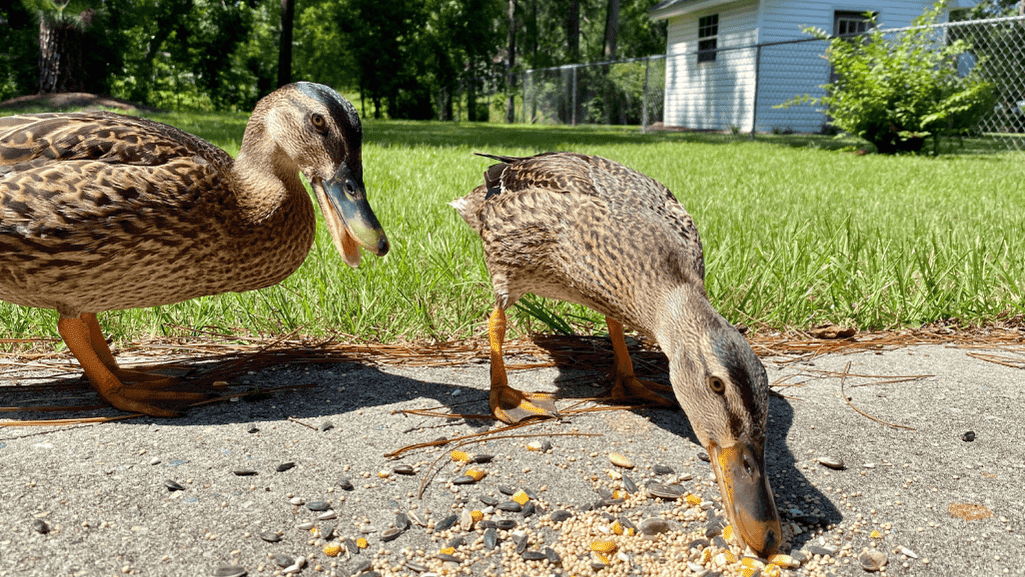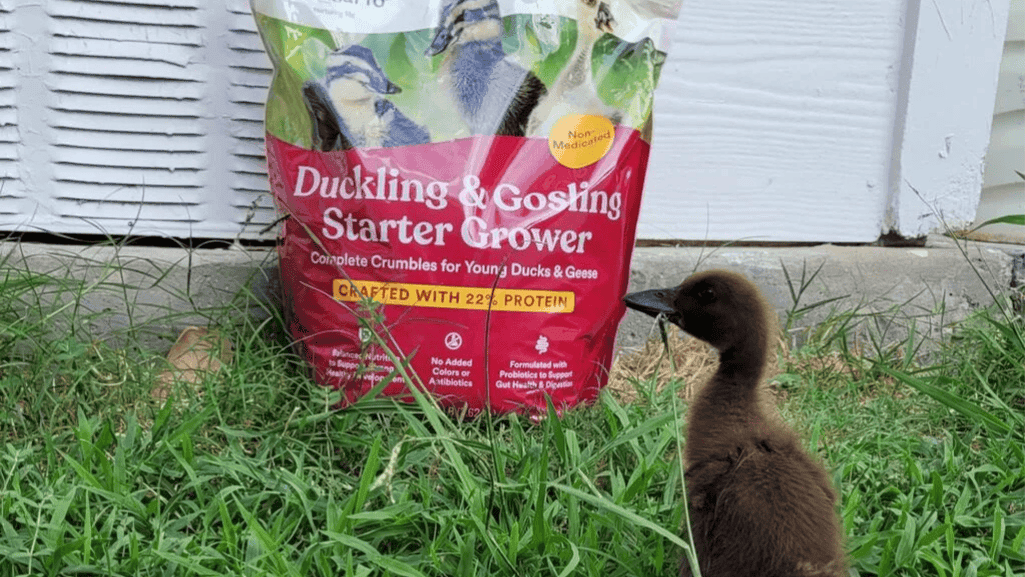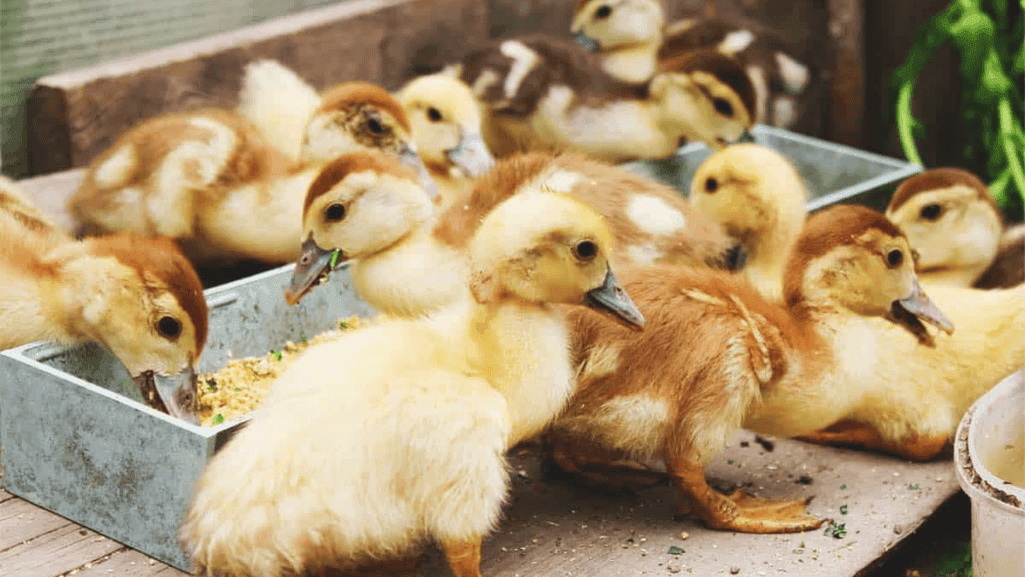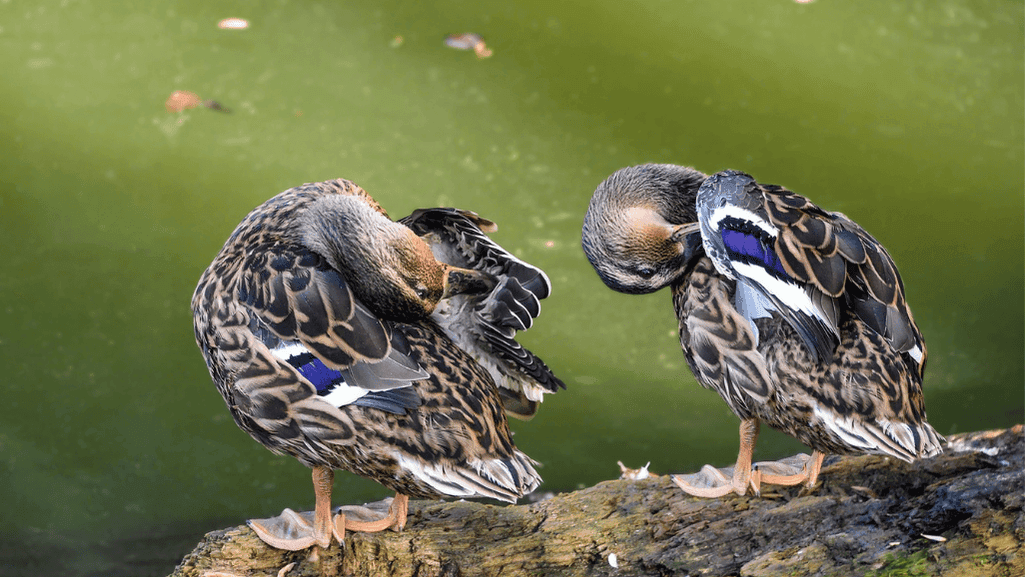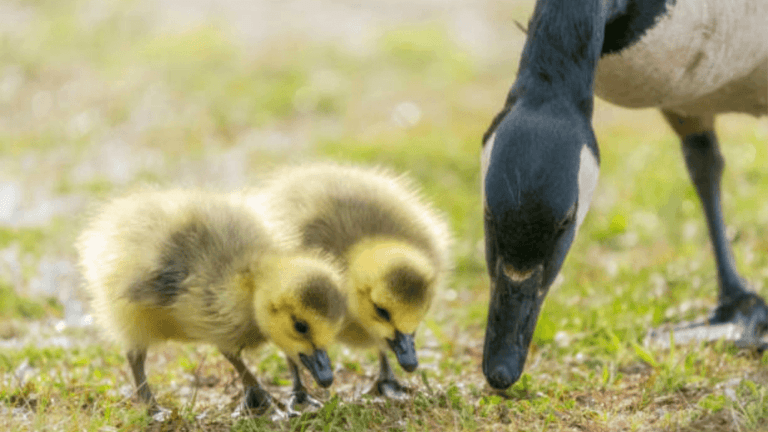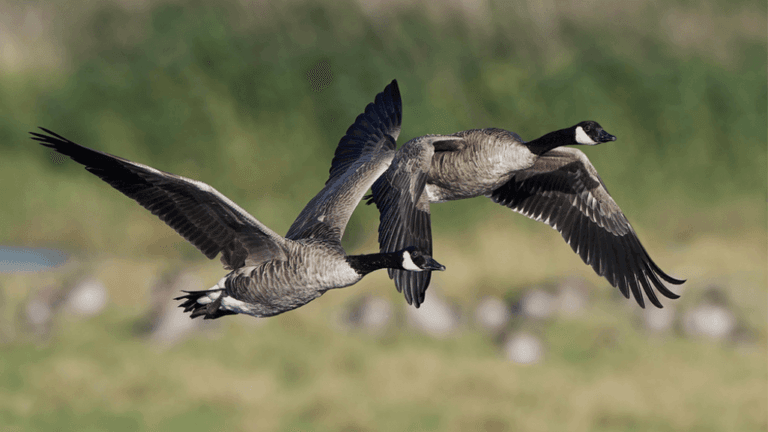Caring for adult ducks and their young can be tough. Ducklings often want to eat the layer feed meant for adults. So, the big question is: can ducklings eat layer feed safely? To keep ducklings healthy, they need a special duckling feeding guide. Adult ducks need layer feed for egg production, but ducklings need something different.
They need a chick starter with oats and yeast for extra niacin. This is important for their growth. Feeding them wrong can hurt their health. For tips on safe feeding, check out this guide on what to feed ducklings.
Key Takeaways
- Proper duckling diet starts with chick starter feed, rich in protein, from hatch to 2 weeks old.
- Reduce protein levels transitioning to grower feed from 2 weeks until they reach 18-22 weeks old.
- Introduce duckling-safe treats, such as peas and leafy greens, after the first two weeks.
- Niacin is critical for ducklings, needing up to 3 times more than chicks.
- Layer feed, with at least 16% protein, is good for ducks over 18-22 weeks old.
- Avoid giving ducklings bread, crackers, and similar snacks that don’t meet their nutritional needs.
Understanding Ducklings’ Nutritional Needs
To ensure ducklings grow well, knowing their ducklings nutrition is key. Each part of their diet, from proteins to vitamins, is important. Let’s look at what makes a good ducklings diet.
Importance of Protein for Ducklings
Protein is vital for ducklings’ growth, helping their muscles and health. Ducklings need more protein than chickens, which is important in their early stages. Starter ducklings need about 20.0% protein, while adult ducks need only 14.5%.
It’s important to not give too much protein. Too much can harm their health. So, it’s important to match protein levels to their age when feeding ducklings.
Essential Vitamins and Minerals
Ducklings need various vitamins and minerals for their fast growth. They need Vitamin A for their eyes, Vitamin D3 for bones, and Vitamin E for their immune system. Minerals like magnesium, zinc, and selenium are also key.
Niacin is very important for their bones and joints. Chicken feed often lacks enough niacin, so ducklings might need extra.
The Role of Calcium in Duckling Diet
Calcium is important for ducklings’ bones, but they need the right amount. Ducklings need about 0.9% calcium, less than layers need. Too much calcium can harm them, causing kidney problems or bad bone growth.
In conclusion, a balanced diet is vital for ducklings’ health and growth. They need more protein early on but less as they get older. It’s also important to watch vitamins and minerals and calcium levels. For more on feeding ducklings, check out feeding ducks and the needs of breeds like the Khaki Campbell on Ducks New World.
What is Layer Feed?
Layer feed is made for adult laying hens. It helps them produce eggs and stay healthy. It’s not always good for ducklings because it’s made for older birds.
Layer feed has the right nutrients for hens to lay eggs well. It’s made to meet their needs during their laying years.
Ingredients Commonly Found in Layer Feed
- Wheat Middlings
- Corn
- Soybean Meal
- Calcium Carbonate
- Dehydrated Alfalfa Meal
These ingredients make a strong base for ducks’ food. They help hens lay eggs at a high rate.
Nutritional Profile of Layer Feed
- Minimum Crude Protein: 16.00%
- Maximum Crude Fiber: 9.00%
- Calcium: 3.50% min to 4.50% max
- Salt: 0.25% min to 0.75% max
- Sodium: 0.01% min to 0.50% max
Layer feed is full of important vitamins. It has Vitamin A and Vitamin D3. These vitamins keep adult birds healthy and productive.
Differences Between Layer Feed and Other Feeds
Layer feed is different from starter feeds for ducklings. Starter feeds have more protein for growing. Layer feed has less protein and more calcium for eggshells.
Ducklings need special nutrients for their first weeks. Layer feed is better for adult ducks. It helps them live longer and lay more eggs.
Risks of Feeding Layer Feed to Ducklings
When thinking about what to feed baby ducks, it’s key to know the dangers of wrong diets. Layer feed is not good for ducklings. Let’s look at the health risks it can cause.
High Calcium Levels and Their Effects
Layer feed has lots of calcium for eggshells in hens. But, too much calcium harms ducklings. It can damage their kidneys and even be deadly. It’s vital to stick to a ducklings feeding schedule that keeps them safe.
Potential Growth Issues
Feeding ducklings the wrong food can make them grow too fast. This can cause “angel wing,” where wings grow before bones and tendons. It’s a serious ducklings health risk. Giving them the right food helps them grow right.
Nutritional Imbalances
A bad diet can hurt a duckling’s health for a long time. Layer feed doesn’t have the right vitamins and proteins for them. Knowing how to feed ducklings safely helps avoid these problems.
When we talk about feeding young birds, we must think about their special needs. Not just using feeds meant for other birds or stages. For more on caring for young ducks, including how to hatch eggs and feed them right, check out detailed duck care guides.
Appropriate Feed Options for Ducklings
It’s important to know what to feed ducklings for their growth and health. The right food helps them grow strong and healthy. It also keeps them from getting sick.
Starter Feed Recommendations
Ducklings need a special starter crumble with 22-22.5% protein in the first weeks. This high-protein diet helps them grow fast. In the first 1-3 weeks, add extra nutrients like niacin with brewer’s yeast or niacin powder to prevent sickness.
Alternatives to Layer Feed
Layer feed is not good for ducklings because it has too much calcium. In emergencies, a homemade feed of oats and cornmeal can be used. But, it’s not a long-term solution. Niacin-enhanced feeds and grit are better options to avoid too much calcium.
Homemade Duckling Diet Recipes
Making homemade duck feed lets you control what they eat. A good mix includes oats for protein and green veggies like kale and lettuce. These add protein, vitamins, and moisture. Ducks need to stay hydrated.
Adding apple cider vinegar to their water boosts their immune system. Grit helps with digestion. This diet is tailored to their needs and helps them grow strong.
Following the ducklings feeding guide is key to their health. It ensures they grow well and avoid sickness. As they get older, their diet needs to change to meet their adult needs.
Signs of Improper Diet in Ducklings
Spotting early signs of feeding issues is key to keeping ducklings healthy. Watching their health closely can stop many problems caused by bad diets. We’ll look at the signs to watch for and the long-term health risks if these signs are ignored.
Behavioral Changes
Ducklings with diet problems often act differently. They might be less social and less active. It’s important for caregivers to notice these changes and make changes to their care and feeding.
Physical Symptoms
Physical signs are easier to see. Look out for diarrhea, vent pasting, or bowed legs. These signs mean the ducklings’ diet is not right. Catching these symptoms early can help a lot.
Long-term Health Concerns
Ignoring diet problems can lead to big health issues later. Ducklings might get sick more often or have permanent damage. This can really hurt their quality of life and how well they do later on.
Keeping a close eye on ducklings’ health is important for their future. Make sure their food is safe and they have enough room to eat and drink. These steps help avoid problems and keep ducklings healthy as they grow.
Tips for Transitioning Ducklings to Adult Feed
Switching ducklings to adult food is key for their health and growth. Start this change when they are 6 months old or start laying eggs. Use a feed with 16%-18% protein at this time.
But, never give adult layer mash to ducklings. It has too much calcium, which is bad for them.
Gradual Dietary Changes
Slowly introduce new foods to ducklings to avoid health problems. Start by mixing a bit of new feed with their old one. Gradually increase the new feed over weeks.
This slow change helps prevent upset stomachs. It also lets you watch how they adjust. To avoid “angel wing,” add uncooked oatmeal to their food.
Monitoring Health During Transition
Keep an eye on ducklings’ health during the transition. Look for signs like changes in behavior or growth. These could mean they need a diet change.
Ducklings need 10mg of niacin daily for bone growth. Lack of it can show in just a week. So, make sure they get enough niacin. Also, watch their water intake, as they drink a lot.
When to Introduce Layer Feed
Introduce layer feed when ducks are fully grown, usually after 6 months. They need to be strong enough for the high calcium in layer feed. A balanced diet is key for their health and egg-laying.
To learn more about ducks, check out this mallard duck biology overview. It’s interesting and important for caring for ducks.



